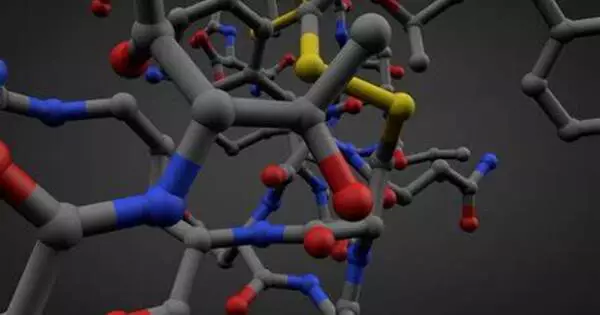Our society is filled with synthetic polymers, from nylon and polyester clothing to Teflon cookware and epoxy glue. These polymers’ molecules are composed of long chains of monomer building blocks, the complexity of which increases the functionality of many such materials.
According to Peng Chen, the Peter J.W. Debye Professor of Chemistry in the College of Arts and Sciences (A&S), copolymers, which consist of different types of monomers in the same chain, allow for fine-tuning of the material’s properties. The monomer sequence is important in determining the properties of a material, but scientists have yet to develop a method for sequencing synthetic copolymers.
Chen and colleagues created CREATS (Coupled REaction Approach Toward Super-resolution Imaging), which allows them to image polymerization catalysis reactions at single-monomer resolution and differentiate monomers from one another using fluorescent signaling. Both are critical steps in determining the molecular structure of a synthetic polymer. In “Optical Sequencing of Single Synthetic Polymers,” published in Nature Chemistry, they describe the technique and the first discoveries they’ve made with it.
In a natural polymer, nature has control. In synthetic polymers, humans make the arrangements, and the chemists generally don’t have that precise control.
Peng Chen
Co-lead authors are Rong Ye, Xiangcheng Sun, and Xianwen Mao, all former postdoctoral researchers in the Chen group. Co-authors are former Chen group postdoctoral researchers Susil Baral and Chunming Liu, current postdoctoral researcher Felix Alfonso, and Geoffrey Coates, the Tisch University Professor in chemistry and chemical biology (A&S).
“Synthetic polymers are made of monomer units linked together like a string of beads,” he said. The monomers in the simplest polymers are identical, but more complex properties emerge when polymers contain monomers of different types – known as copolymers. The precise arrangement of the monomers in a copolymer influences its properties such as stiffness and flexibility.
According to Chen, the sequence also influences the properties of natural polymers. A protein, for example, is composed of 20 amino acid monomers that are arranged in a precise sequence. “In a natural polymer, nature has control,” Chen went on to say. “In synthetic polymers, humans are making the arrangements, and the chemists generally don’t have that precise control.”

According to Chen, the difficulty in sequencing copolymers stems from the heterogeneity of synthetic polymers. Individual chains vary in length, composition, and sequence, necessitating single-polymer sequencing methods capable of resolving and identifying individual monomers. According to Chen, some modern methods allow scientists to control the arrangement of monomers in a chain, but only for very short polymers (10 to 20 monomers long).
The researchers can use CREATS to determine the sequence of a polymer as it is made, one monomer at a time, by imaging and identifying each monomer as it is added to the polymer. CREATS combines the polymerization reaction with another reaction that generates fluorescent signals to make the monomers visible.
“Every monomer that goes in gives off a puff of light,” Chen said. “The light is induced by a laser, and the puff of light has a color. In our case, it’s either green or yellow. By seeing whether it’s yellow or green, we see what monomer goes in.”
The lab is already set up to measure the properties of synthetic polymers. After determining the sequence of an individual polymer, the researchers will combine the two experiments to correlate structure and function, eventually providing guiding principles for polymer design to achieve specific properties.
“If you know how sequence controls property, you can really think about designing whatever sequence you want to achieve a certain property,” Chen went on to say. “This knowledge presumably can help people tailor their materials for a desired application.”





